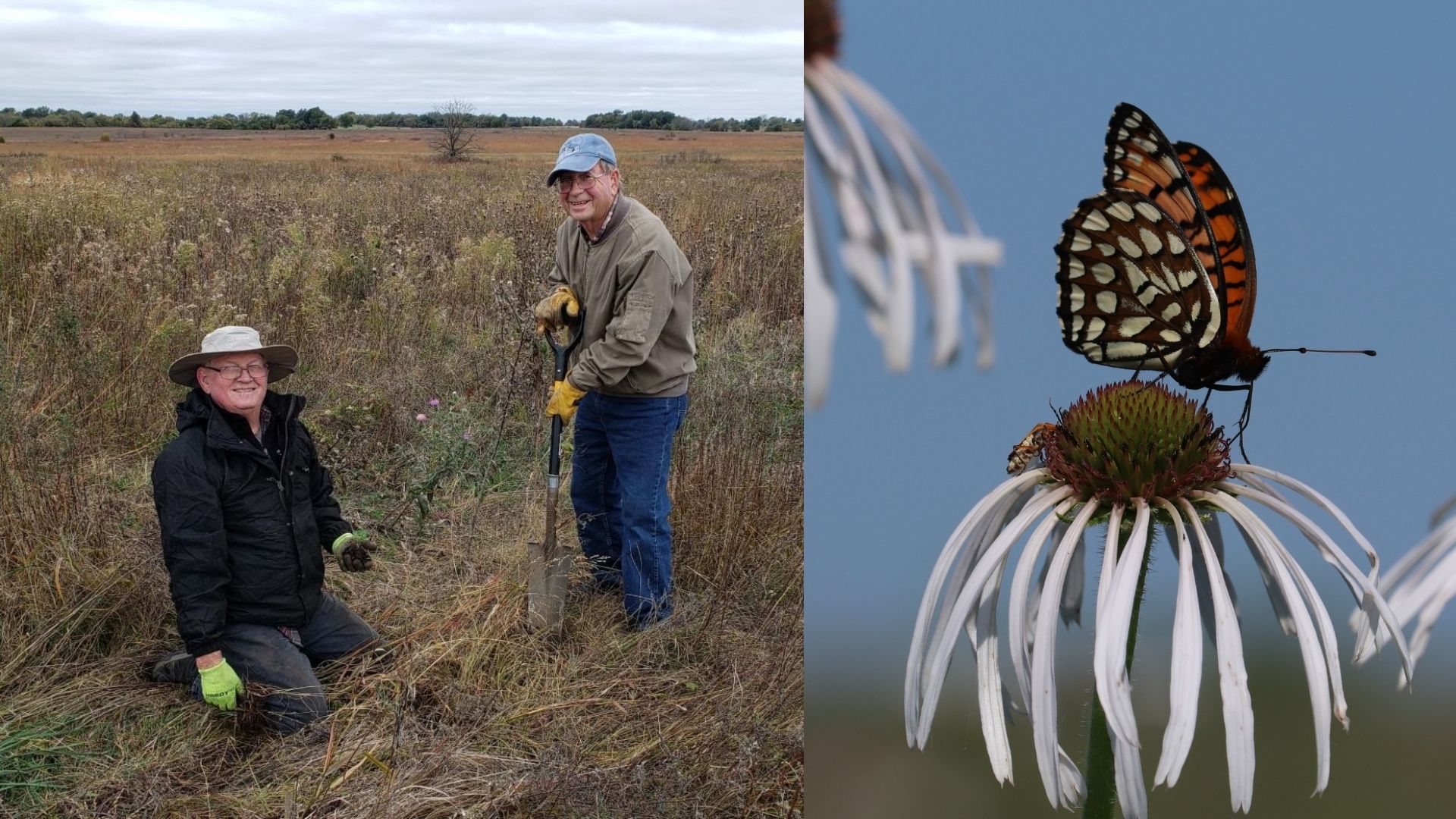In October, volunteers assisted MPF Director of Prairie Management Jerod Huebner with the planting of at least 1,200 plugs (small plants) of a variety of prairie-restricted wildflower species over three properties. These plants—including royal catchfly (Silene regia), lead plant (Amorpha canescens), white prairie clover (Dalea candida), purple prairie clover (Dalea purpurea), and tall green milkweed (Asclepias hirtella)—will add plant diversity to three prairie plantings that MPF has established adjacent to its Noah Brown’s and Snowball Hill original prairie remnants. The plants will also provide nectar and pollen for pollinating insects, and most will also serve as host plants, with foliage eaten by numerous butterfly and moth caterpillars.
Jerod and volunteers also planted 250 plugs of arrow-leaved violet (Viola sagittata) at MPF’s 67-acre prairie plantings next to its original Pleasant Run Creek Prairie. Prairie violet species (including arrow-leaved violet) are essential host plants for the caterpillar larvae of the state-listed regal fritillary butterfly (Argynnis idalia). (The regal fritillary looks similar to the more common great spangled fritillary, which you may see visiting your native plantings and on prairies.)
A candidate for federal listing under the U.S. Endangered Species Act, the nationwide status of this striking large butterfly with white spots on its ventral wings, as shown above, is currently being reviewed. According to a NatureServe analysis, Missouri’s populations are considered vulnerable.
To help increase the odds of survival for the regal fritillary, Jerod and volunteers have been painstakingly collecting seeds of prairie violets and sending them to native plant propagators to produce plugs, which have a better rate of establishment than direct broadcast of the seeds into plantings. With more prairie violets, the butterfly larvae have increased food sources, which can translate into more secure populations of regals.
Regals overwinter on prairies as caterpillars. The regal fritillary life cycle underscores how important it is to not burn an entire prairie tract in a year. However, no burning is not a solution either, as without fire, growing conditions for the violet host plants will degrade. A careful balance is required. MPF leaves unburned portions of each of its prairie tracts annually. As we learn more about regals, we may adjust our burn regimes even more. Learn more in this Missouri Prairie Journal article on regals by Natural History Biologist Steve Buback, which includes photos of the butterfly’s life cycle.
Photo of MPF volunteers Randal and Jim by Jerod Huebner, taken at MPF’s Pleasant Run Creek Prairie. Photo of regal fritillary butterfly by Bruce Schuette.
You can volunteer with MPF, too! Learn more about volunteer opportunities and sign up on our Volunteers webpage.


